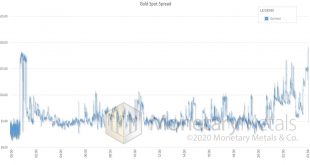Goodreads rating 4.19. Graeber’s book contains many interesting historical observations but lacks a concise argument to convince a brainwashed neoclassical economist looking for coherent arguments on money and debt. After 60 pages, 340 more seemed too much. Chapter one: … the central question of this book: What, precisely, does it man to say that our sense of morality and justice is reduced to the language of a business deal? What does it mean when we reduce moral obligations to debts? …...
Read More »The Out Has Not Yet Begun to Fall, Market Report 31 March
So, the stock market has dropped. Every government in the world has responded to the coronavirus with drastic, if not unprecedented, violations of the rights of the people. Not to mention, extremely aggressive monetary policy. And, they are about to unleash massive fiscal stimulus as well (for example, the United States government is about to dole out over $2 trillion worth of loot). The question on everyone’s mind is what will be the consequences? The standard...
Read More »Is Now a Good Time to Buy Gold? Market Report 16 March
We got hate mail after publishing Silver Backwardation Returns. It seems that someone thought backwardation means silver is a backward idea, or a bad bet. “You are a *&%#! idiot,” cursed he. “Silver is the most underpriced asset on the planet,” he offered as his sole supporting evidence. He doesn’t know that backwardation means scarcity, not that a commodity’s price is too high. Since we wrote that on March 2 (our Reports are always based on the prior Friday’s...
Read More »Socialism and Gold
Most people assume that the central bank prints money when it buys bonds. They further assume that this increase in the quantity of money causes an increase in the general price level. And, this leads them to assume that the value of the money is 1 / P (P is the general price level). Therefore, when the central bank prints money to buy bonds, it is diluting the value of the money held by everyone—in proportion to the amount printed divided by the total amount in...
Read More »Puerto Rico’s Debt Restructuring
On Econofact, Daniel Bergstresser provides background information on Puerto Rico’s debt crisis. From his text: Unlike U.S. municipalities, a U.S. territory cannot resort to Chapter 9 of the Bankruptcy act. The island’s economy benefited from corporate tax exemptions (until 2006) and from tax exemptions on interest paid by municipal bonds issued by Puerto Rico and its agencies (“triple tax exemption”). Total bond indebtedness (face value) amounts to over $70 billion, about 70 percent of...
Read More » Swiss Economicblogs.org
Swiss Economicblogs.org



